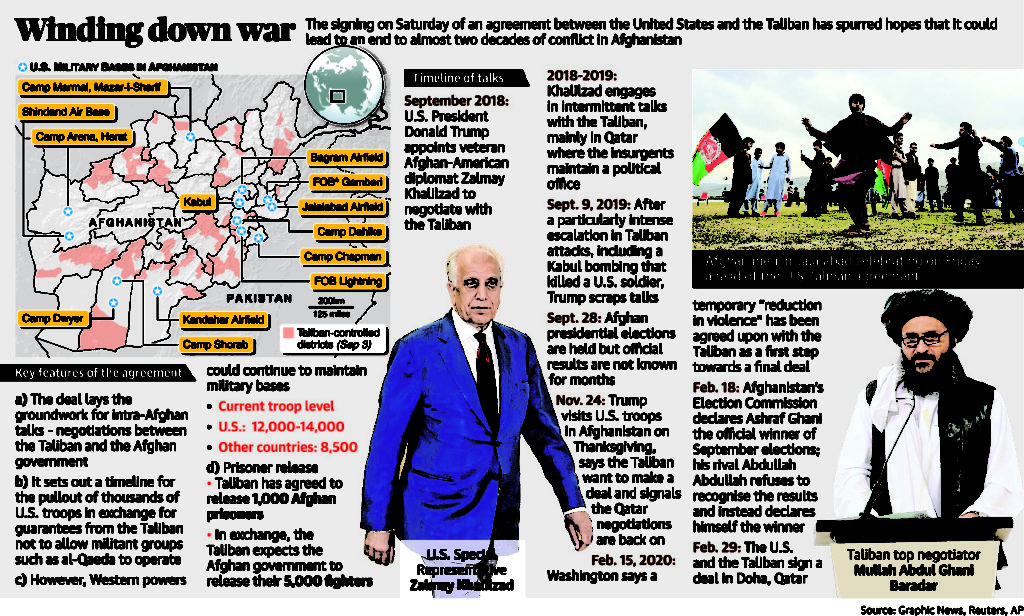Why in news?
- The U.S. signed a deal with the Taliban on 29th February 2020 that could pave way for a full withdrawal of foreign soldiers from Afghanistan over the next 14 months.
- This represents a step towards ending the 18-year-war in the nation.
- Taliban leader calls it ‘day of victory’; Pompeo says victory will be achieved only when Afghans prosper
- India welcomes the agreement.

Details
- The deal was signed in the Qatari capital Doha.
- India attended the landmark event of the long-sought peace deal as an “observer”.
- The United States said it is committed to reducing the number of its troops to 8,600 from the current 13,000 within 135 days of signing the deal.
- It also said it is working with allies to proportionally reduce the number of coalition forces in Afghanistan, if the Taliban were to adhere to its commitments.
- A full withdrawal of all foreign forces would occur within 14 months of the deal getting signed if the Taliban holds up its end of the deal.
- The agreement is expected to lead to a dialogue between the Taliban and the Kabul government that, if successful, could ultimately see an end to the grinding 18- year conflict.
- For U.S President Donald Trump, the Doha deal represents a chance to make good on his promise to bring U.S. troops home.
- The accord also comes amid a fragile political situation in Afghanistan.
Relation Between India and Afghanistan

- Relations between the people of Afghanistan and India traces to the Indus Valley Civilisation.
- Between the 10th century to the mid-18th century, northern India has been invaded by a number of invaders based in what today is Afghanistan. Among them were the Ghaznavids, Ghurids, Khaljis, Suris, Mughals and Durranis.
- India shares border with Pakistan and there is the Durand Line conflict between Pakistan and Afghanistan.
- The Republic of India was the only South Asian country to recognize the Soviet-backed Democratic Republic of Afghanistan in the 1980s, though relations were diminished during the 1990s Afghan civil war and the Taliban government.
- The Turkmenistan–Afghanistan–Pakistan–India Pipeline (TAPI), also known as Trans-Afghanistan Pipeline, is a natural gas pipeline being developed by the Galkynysh – TAPI Pipeline Company Limited. The pipeline will transport natural gas from the Galkynysh Gas Field in Turkmenistan through Afghanistan into Pakistan and then to India.
What is Durand Line?

- The Durand Line is an international 2,430-kilometre border between Afghanistan and Pakistan.
- It was originally established in 1893 as the international border between British India and Afghanistan by Mortimer Durand, a British diplomat of the Indian Civil Service, and Abdur Rahman Khan, the Afghan Emir.
- The Purpose was to fix the limit of their respective spheres of influence and improve diplomatic relations and trade.
- Although the Durand Line is internationally recognized as the western border of Pakistan, it remains largely unrecognized by Afghanistan.





